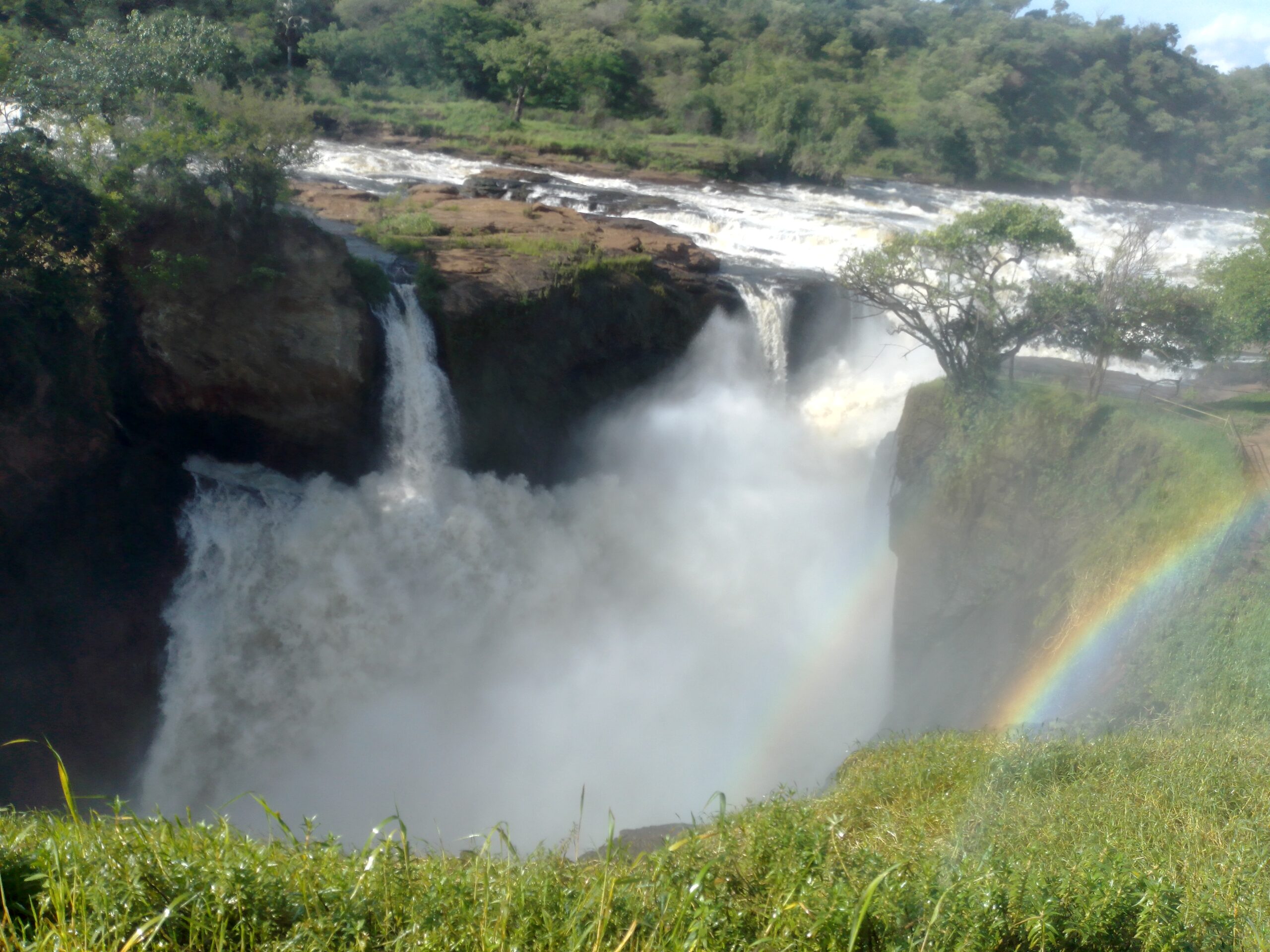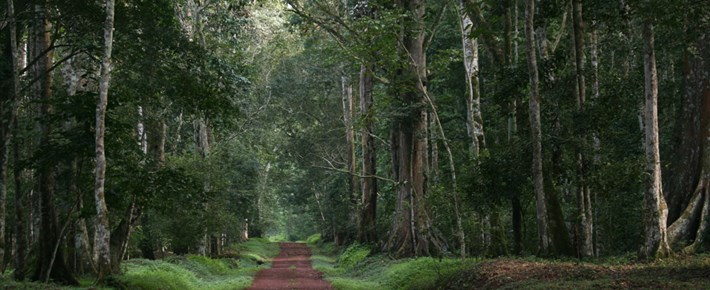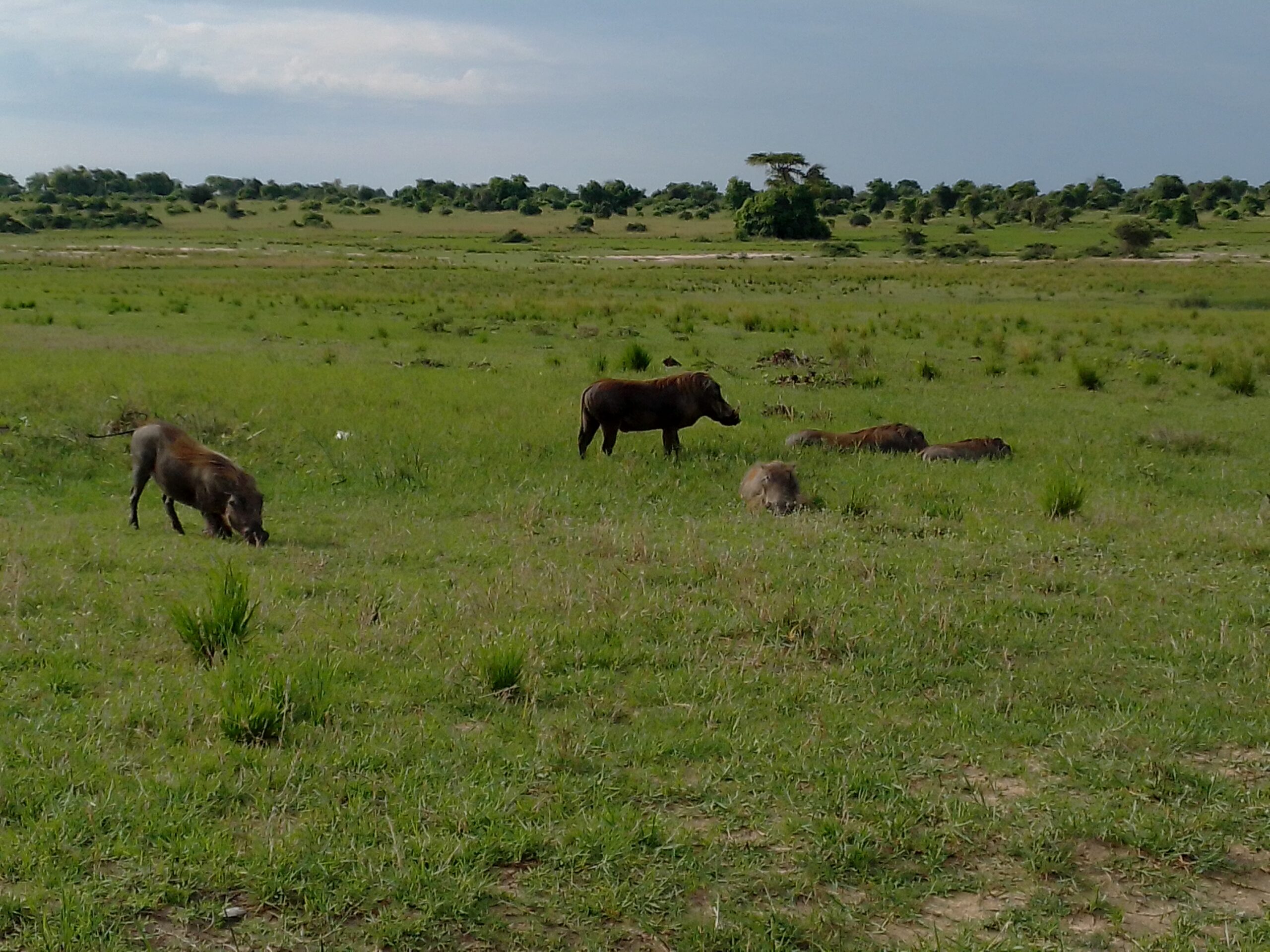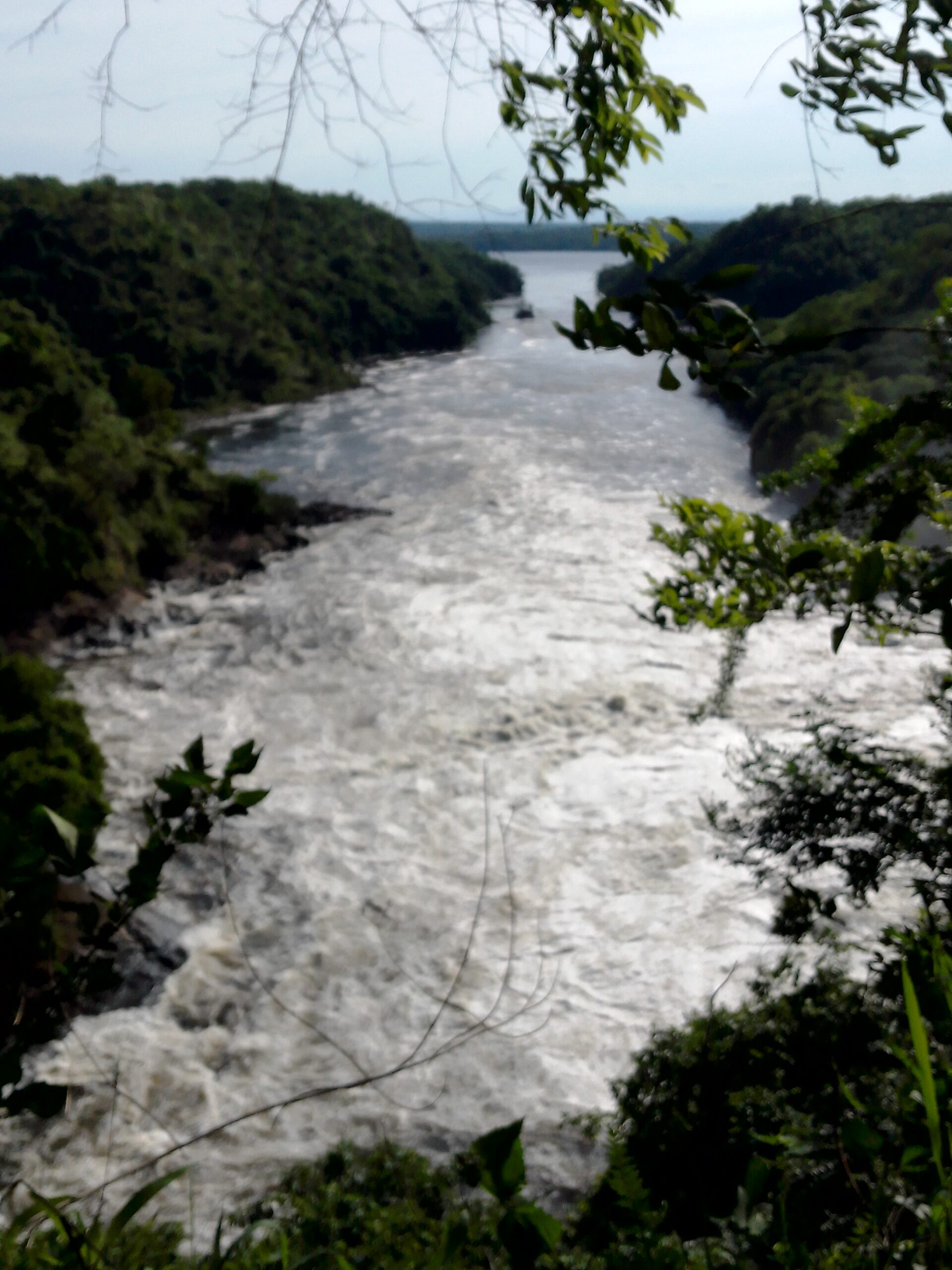Murchison falls national park was named after the powerful falls of River Nile which bisects the protected area into two sectors, the north and the south. Each part consists of different flora and fauna. The Nile waters give life to the ecosystem and biodiversity of the park including over 78 mammal species, 451 birds, primates and chimpanzees. The park offers a variety of safari experiences to travellers such as game drives, boat cruise, nature walks, and spectacular waterfalls, making for one of the best national parks for a safari in Uganda.
The world’s strongest waterfall

Murchison falls, the park’s most spectacular attraction, is formed by the Nile River right in the centre of the park. All the water that comes from Lake Victoria squeezes through a narrow gap about 7 meters wide between rocks and then plunges off a 45-meter-tall cliff with a thunderous roar into a gorge called the devil’s cauldron. Due to mist and light around the falls, a trademark rainbow appears and can be seen during day.
The stretch (17 km in length) of river below the falls up to the new Paara bridge is known as Victoria Nile. Cruising upstream from Paara to the bottom of the falls offers opportunities to spot wild animals along the banks such as elephants, buffaloes, monitor lizards, as well as those that dwell in water like Nile crocodiles, and hippos. The Nile River boat cruise is key for birding with a variety of water bird species to see including African fish eagles, pied kingfishers, Egyptian goose, white tailed cormorants, and pelicans.
The tropical forests in southern Murchison falls

The park is located at the northern end of the Albertine rift valley. The river to a larger extent influences the makeup of the ecosystem than the rift valley itself. The southern sector contains Budongo central forest reserve with an area of 825 sq.km. The moist semi-deciduous dense tropical forest is home to a number of primate species including over 600 chimpanzees as well as black and white colobus monkeys, red tailed monkeys, olive baboons, and velvet monkeys. Budongo is also a key birding site with 360 species of birds. The yellow-footed flycatcher (Muscicapa sethsmithi) and Puvel’s illadopsis (Illadopsis puveli) haven’t been identified in other tropical forests of East Africa. Birding trails in Budongo include the Royal Mile Walk, which was created by Kabalalega, who was the king of Bunyoro Kitara empire between 1870 – 1899.
The northern sector

Traveling from the south across the river at the new Paara bridge to the northern sector, you will notice a gradual transition of vegetation. From dense forests and shrubs of small trees, tall elephant grass to open savanna plains interspersed by borassus palms and acacia trees. There are rift valley cliffs, and some dense acacia thickets, and the Nile delta swamp.
The area is a habitat for large mammal species including 950 elephants, over 1,450 Nubian giraffes, which is almost 50% of Africa’s Nubian giraffe population, and buffaloes. There are also several antelope species such as Jackson’s hartebeests, Uganda kobs, waterbucks, bushbucks, oribi as well as warthogs. These herbivores attract carnivores that are often spotted during game drives such as leopards, lions, and spotted hyenas. Small cats are also present such as serval cats, gentes, as well as mongoose, vultures, and African rock pythons.
River Nile promoting tourism in Murchison falls national park

The discovery of the source of the Nile River helped to promote Murchison falls national park as a safari destination in a number of ways. People who made expeditions to find the source of the Nile created landmarks in countries along its course. Such history positions Murchison falls and Uganda at large as an ideal place to visit. The target travellers include geologists, modern explorers, and scientists intending to follow in the footsteps of the courageous explorers.
That legacy is still alive today and complements the rich ecosystem and biodiversity of the park itself. For instance, Kabalega falls were later renamed by Sir Samuel Baker after Rodrick Murchison who was the president of Geographical Society of London. These are some of the most celebrated geographers in the world. This keeps the park in the minds of those planning a safari to visit former British colonies in Africa (Commonwealth Nations).
Besides, the other British explorers, John Hanning Speke and Richard Burton were sent on a mission to find the Great Lakes of Africa. They reached Lake Tanganyika in Tanzania in 1858. After Burton became sick, Speke went further to discover Lake Victoria and found the source of the Nile in Jinja city, eastern Uganda. It was put on the world map in 1865. Today, Speke’s monument in Jinja is visited as the true source of the Nile River. Jinja also offers grade IV and V rapids, making for the best white water rafting in Africa. The Albert Nile delta wetland in the park is home to the shoebill stork and a must-visit for keen bird watchers.
The two Niles
The Nile is the longest river in the world, measuring 6,650km from its headwaters at Lake Victoria in Uganda to its mouth in Egypt, where it enters the Mediterranean Sea. However, it has many tributaries and two prominent sections including the White Nile that flows from Uganda to Sudan and Blue Nile from Sudan to Egypt.
White Nile
The White Nile was called so due to the presence of rapids and waterfalls along its course. From Jinja going northwards to South Sudan, there are more than 10 waterfalls including the Murchison, Uhuru, and Karuma waterfalls in Murchison falls national park. Aruu and Kurr falls in Adjumani and Pader districts in northern Uganda along the Nile tributaries. The waterfalls in South Sudan include Fura and Aga falls.
The Blue Nile River
When the Nile reaches Khartoum, capital city of Sudan, due to the silt and sand of the Sahara Desert, the flow and colour of its waters becomes pale and turbid. This is called Azraq in Arabic which means blue hence the origin of the name. The Blue Nile, 1,460km long flows northwards in and out of Lake Tana to form the Blue Nile falls in Amhara region of northwest Ethiopian highlands. The falls are 42 meters high and when the water levels are high their width can reach up to 400 meters. There’s a great link between the Murchison falls and the Blue Nile falls. Given that they’re both the biggest waterfalls along the world’s longest river.
In Egypt, the Blue Nile is located 7km away from Khafre and Khufu, the Great pyramids of Giza, one of the 7 wonders of the ancient world.
The Egypt Nile boat cruise and the Murchison falls boat safari
Adventurous and cultural travellers should consider visiting both Egypt and Uganda to appreciate the established heritage of the Nile and rich biodiversity. With a well-crafted African safari, you can trace the routes and visit landmarks all the way from Egyptian pyramids through Ethiopian highlands, Sudan, South Sudan, to the East African countries including Uganda, Tanzania, Rwanda, Burundi, and DR Congo.




